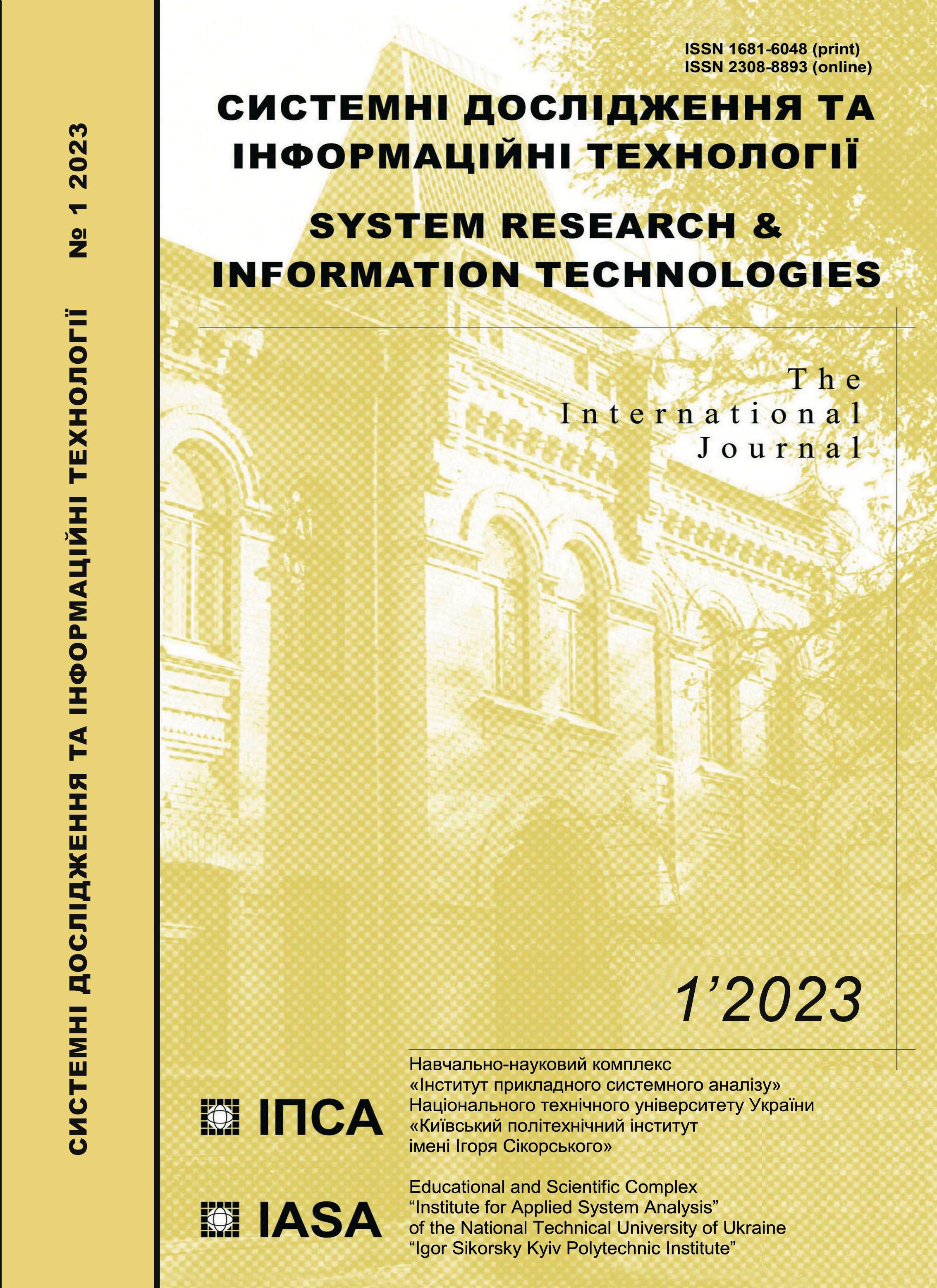Study of the underground tunnel planning. Cognitive modelling
DOI:
https://doi.org/10.20535/SRIT.2308-8893.2023.1.03Keywords:
cognitive, impulse modelling, planning, scenarios, underground tunnelAbstract
A study of the underground tunnel planning reliability for megacities is proposed based on the use of foresight and cognitive modeling methodologies. Using the foresight methodology allows, with the help of expert estimation procedures, to identify critical technologies and build alternatives of scenarios with quantitative characteristics. For the justified implementation of a particular scenario, cognitive modeling is used, which allows to build causal relationships based on knowledge and experience, understand and analyze the behavior of a complex system for a strategic perspective with a large number of interconnections and interdependencies. The suggested study allows the reliability planning of underground tunnels on the basis of reasonable scenarios selection and justification of their creation priority.
References
S. Durmisevic, “The future of the underground space,” Cities, vol. 16, no. 4, pp. 233–245, 1999.
R. Bhutani, S. Ram, and K. Ravinder, “Impact of Metro Rail Construction Work Zone on Traffic Environment,” Transportation Research Procedia, 17, pp. 586–595, 2016. doi: 10.1016/j.trpro.2016.11.11.
N. Pankratova, G. Gorelova, and V. Pankratov, “The Strategy of Underground Construction Objects Planning Based on Foresight and Cognitive Modelling Methodologies. Book Chapter 5,” in Springer book M. Zgurovsky and N. Pankratova (eds.), System Analysis & Intelligent Computing, Studies in Computational Intelligence, vol. 1022, pp. 69–91, 2022. Available: doi.org/10.1007/978-3-030-94910-5_5
N.D. Pankratova, I.A. Savchenko, and G.I. Gayko, Development of underground urbanism as a system of alternative design configurations, (in Ukrainian). Kyiv: Scientific thought, 2019.
Innovative development of socio-economic systems based on methodologies of foresight and cognitive modelling, (in Russian). Collective monograph edited by G.V. Gorelova, N.D. Pankratova. Kyiv: Naukova Dumka, 2015, 464 p.
W.J. Rankin, “Ground movements resulting from urban tunnelling: predictions and effects,” Geological Society, London, Engineering Geology Special Publications, 5(1), pp. 79–92, 1988. doi: 10.1144/gsl.eng.1988.005.0.
S. Li et al., “An overview of ahead geological prospecting in tunnelling,” Tunnelling and Underground Space Technology, 63, pp. 69–94, 2017. doi: 10.1016/j.tust. 2016.12.011.
R. Sterling, J. Carmody, and W.H. Rockenstein, “Case study of life safety standards for a large mined underground space facility in minneapolis, minnesota,” Tunnelling and Underground Space Technology, 7(2), pp. 119–125, 1992. doi:10.1016/0886-7798(92)90041-f.
L. Andersen and S.R.K. Nielsen, “Reduction of ground vibration by means of barriers or soil improvement along a railway track,” Soil Dynamics and Earthquake Engineering, 25(7–10), pp. 701–716, 2005. doi: 10.1016/j.soildyn.2005.04.
L. Auersch, “Mitigation of railway induced vibration at the track, in the transmission path through the soil and at the building,” Procedia Engineering, 199, pp. 2312–2317, 2017. doi: 10.1016/j.proeng.2017.09.1.
G. Berta, “Blasting-induced vibration in tunnelling,” Tunnelling and Underground Space Technology, 9(2), pp. 175–187, 1994. doi: 10.1016/0886-7798(94)90029-9.
Nadiya Kremin and Yuriy Andreychuk, “Geoecological risks of underground space development in the central part of L’viv (Ukraine),” Proceedings Conference: Constructive geography and cartography: state, problems, perspectives: International scientific and practical online conference materials, dedicated to 20th anniversary of Department of Constructive Geography and Cartography of Ivan Franko National University of L’viv, 2020, pp. 15–20.
A. Colaço, P.A. Costa, P. Amado-Mendes, L. Godinho, and R. Calçada, “Mitigation of vibrations and re-radiated noise in buildings generated by railway traffic: a parametric study,” Procedia Engineering, 199, pp. 2627–2632, 2017. doi:10.1016/j.proeng.2017.09.4.
D. Connolly, A. Giannopoulos, and M.C. Forde, “Numerical modelling of ground borne vibrations from high speed rail lines on embankments,” Soil Dynamics and Earthquake Engineering, 46, pp. 13–19, 2013. doi: 10.1016/j.soildyn.2012.12.
P. Coulier, V. Cuéllar, G. Degrande, and G. Lombaert, “Experimental and numerical evaluation of the effectiveness of a stiff wave barrier in the soil,” Soil Dynamics and Earthquake Engineering, 77, pp. 238–253, 2015. doi: 10.1016/j.soildyn.2015.04.
. Yang, M.F.M. Hussein, and A.M. Marshall, “Centrifuge and numerical modelling of ground-borne vibration from an underground tunnel,” Soil Dynamics and Earthquake Engineering, 51, pp. 23–34, 2013. doi: 10.1016/j.soildyn.2013.04.
C. Yuan, X. Wang, N. Wang, and Q. Zhao, “Study on the Effect of Tunnel Excavation on Surface Subsidence Based on GIS Data Management,” Procedia Environmental Sciences, 12, pp. 1387–1392, 2012. doi: 10.1016/j.proenv.2012.01.4.
N. Pankratova, I. Savchenko, H. Haiko, and V. Kravets, “System approach to planning urban underground development,” Int. Journal “Information Content and Processing”, 6(1), pp. 3–17, 2019.
N.D. Pankratova, G.V. Gorelova, and V.A. Pankratov, “Study of the Plot Suitability for Underground Construction: Cognitive Modelling,” ISDMCI 2020: Lecture Notes in Computational Intelligence and Decision Making, pp. 246–264. Available: https://doi.org/10.1007/978-3-030-54215-3_16
F. Roberts, Graph Theory and its Applications to Problems of Society. Philadelphia: Society for Industrial and Applied Mathematics, 1978.

